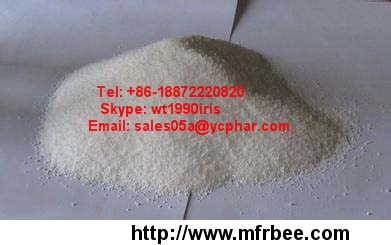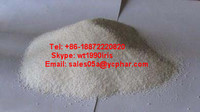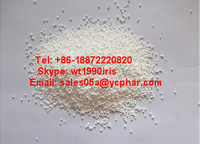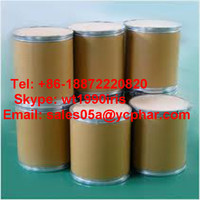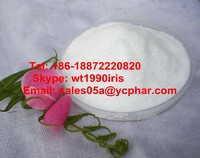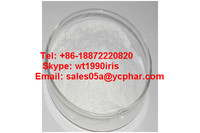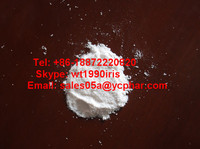Cellulose microcrystalline CAS 9004-34-6 MCC/sales05a@ycphar.com(OAP-024)
Product Quick Detail
- For Any Further Information
- sales05a AT ycphar DOT com
- Steroids
- http://cnrdn.com/WuUE
- Skype
- wt1990iris
- Packaging
- negotiable
- Delivery
- 4 Days
Specifications
Cellulose microcrystalline(MCC)
Product Name: Cellulose microcrystalline(MCC)
Synonyms: Microcrystalline cellulose; AVICEL PH;AVICEL PH 101(R);AVICEL PH 102;AVICEL PH 105(R);AVICEL(R);''AVICEL(R)'';AVICEL SF;AVIRIN;
Cellulose microcrystalline(MCC) CAS No.: 9004-34-6
Cellulose microcrystalline(MCC) EINECS No.: 232-674-9
Cellulose microcrystalline(MCC) Molecular formula: H2
Cellulose microcrystalline(MCC) Molecular weight: 2.01588
Cellulose microcrystalline(MCC) Appearance: white powder
Microcrystalline Cellulose, white powder, revolutionized tableting because of its unique compressibility and carrying capacity. It exhibits excellent properties
as an excipient for solid dosage forms. It compacts well under minimum compression pressures, has high binding capability and creates tablets that are extremely hard, stable, yet disintegrate
rapidly. Other advantages include low friability, inherent lubricity, and the highest dilution potential of all binders. These properties make Microcrystalline Cellulose particularly valuable
as a filler and binder for formulations prepared by direct compression, although it is also used in wet or dry granulation
Application
It is widely used in pharmaceuticals, foods, papers and structural composites. Microcrystalline cellulose is a naturally derived stabilizer, texturizing agent, and fat
replacer, emulsifier, binding agent etc
In drugs: Microcrystalline cellulose focus on opportunities for drugs is primarily tablets including direct compression and wet granulation. It is also used to prepare
granules, beadlets or minor involvement in capsules, suppositories etc.
In foods: Microcrystalline cellulose can apply widely in food industries on account of itsexcel lent properties. For the purpose of anticaking, it has become popular. Likewise,
by using of ingredient as absorbent, shredded cheese can readily separate form as well as appropriate customer's use.
Usage: Crude fiber foods include cellulose, semi-crude fiber and lignin. Dietary fiber is not digested and absorbed a substance in the past considered a "waste", it is now considered to protect human health and prolong life aspect plays an important role. So, call it the seventh nutrients.
1. Contribute to intestinal E. coli synthesize vitamins.
2 Cellulose proportion of small, bulky, occupy a larger space, giving a sense of satiety, conducive to weight loss in the gastrointestinal.
3. Cellulose bulky, can stimulate the gastrointestinal tract after eating, so that increased secretion of digestive and gastrointestinal motility increased, constipation can prevent
diabetes.
4 high-fiber diet can delay gastric emptying and intestinal transit time change, such as the role of soluble fiber forms a gel in the intestine leaving slows the absorption of sugar. Also by
reducing the intestinal hormones such as gastric inhibitory peptide or glucagon secretion, reduce the islet B cell stimulation, reduce insulin release and increased peripheral insulin receptor
sensitivity, glucose metabolic strengthened.
5 In recent years, studies have shown that a high fiber diet makes diabetes type Ⅰ monocyte insulin receptors on the cell
increases, thereby saving insulin requirements. Thus, patients with diabetes eat high-fiber diet, not only can improve high blood sugar, reduce the dose of insulin and oral hypoglycemic use of
drugs, and are conducive to weight loss, but also prevent constipation, hemorrhoids and other diseases.
Cellulose is the major physiological role of adsorption of large amounts of water, increasing the amount of manure, and promote bowel movements and accelerate fecal excretion of carcinogenic
substances in the intestine so that the residence time is reduced, reducing the intestinal adverse stimulus, which can prevent colorectal cancer
- Country: China (Mainland)
- Business Type: Manufacturer
- Market:Asia,Europe,Americas,Oceania
- Founded Year:2001
- Address:
- Contact:Iris Wu
